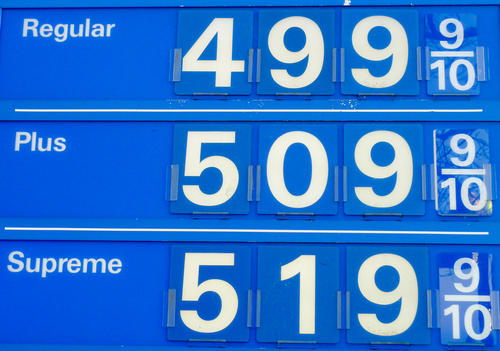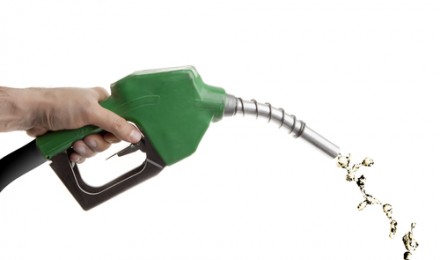After reaching a five-month high on February 27, gas prices have plummeted 25 cents in the last month. According to some analysts we may have seen peak gasoline prices for 2013. However, retail gasoline prices in the months of April have traditionally demonstrated a “great deal of volatility,” according to GasBuddy petroleum analyst Gregg Lasoski.
After predicting an average gas price of $3.95 for April, “Now we’re saying it’s more likely to be closer to $3.69” said Laskoski. The AAA website, reports that the national average for gasoline decreased to $3.64 per gallon from $3.68 cents per gallon. A month ago, prices at the pump averaged $3.78. This time last year, gasoline prices averaged out at $3.92 per gallon.
Laskoski reports that he sees “strong numbers” for gasoline production and refinery operations in the Gulf and on the East Coast. “Those are very encouraging signs,” said the analyst.
Factors that Influence Gas Prices
A blend of dynamics come together to fuel the “yo-yo” effect that has become the norm with gas prices. Here are five of the most common reasons for gas price volatility:
- Demand – Domestic and global recession means that fewer people are working and driving. As the economies improve, the opposite is true. According to a story in the Wall Street Journal, this dynamic represents more of global phenomena. In the United States, vehicle miles traveled has actually been in a steady downtrend. Some industry analysts predict that prices will trend up in the final two quarters of 2013 “as supplies struggle to catch up with rising demand.”
- International politics – Political unrest in Yemen, Nigeria and Sudan have a disruptive effect on petroleum supplies. In response to a potential blockade of Straits of Hormuz, many Asian and EU buyers have resorted to hoarding and panic buying. Sanctions imposed against Iran by the U.S. government could disrupt oil production.
- Seasonal trends – Historically, gasoline prices increase in the spring and summer months. During this period, people tend to drive more—visiting relatives, enjoying Sunday drives and taking family vacations. Also, during the summer months smog becomes an issue. Therefore, refineries have a mandate to produce cleaner-burning fuel, which translates into higher prices at the pumps.
- More fuel-efficient vehicles – This one is strictly from the annals of “believe it or not.” The campaign to encourage Americans to drive more gas-efficient cars and electric automobiles has lead to a drop in revenues for municipalities, county and state governments because the owners of these vehicles buy less or no gas. To make up for the revenue shortfall, politicians have considered concocting various schemes to raise gas tax rates.
- Oil speculation – Goldman Sachs produced a study that shows that speculation in the marketplace tacks on 8-10 cents to the price on a barrel of crude oil before it reaches the refinery.Twenty-two percent of the price of a barrel of oil goes to oil speculators on Wall Street.
Consequently, the owner of a gas-guzzling Ford F-150 pickup pays about $14.56 of the cost of filling up the vehicle to oil speculators. In addition, hedge funds also speculate on oil helping to drive up prices, based on a report produced by Economic Populist.
After reaching a five-month high on February 27, gas prices have plummeted 25 cents in the last month. According to some analysts we may have seen peak gasoline prices for 2013. However, retail gasoline prices in the months of April have traditionally demonstrated a “great deal of volatility,” according to GasBuddy petroleum analyst Gregg Lasoski.
After predicting an average gas price of $3.95 for April, “Now we’re saying it’s more likely to be closer to $3.69” said Laskoski. The AAA website, reports that the national average for gasoline decreased to $3.64 per gallon from $3.68 cents per gallon. A month ago, prices at the pump averaged $3.78. This time last year, gasoline prices averaged out at $3.92 per gallon.
Laskoski reports that he sees “strong numbers” for gasoline production and refinery operations in the Gulf and on the East Coast. “Those are very encouraging signs,” said the analyst.
Factors that Influence Gas Prices
A blend of dynamics come together to fuel the “yo-yo” effect that has become the norm with gas prices. Here are five of the most common reasons for gas price volatility:
- Demand – Domestic and global recession means that fewer people are working and driving. As the economies improve, the opposite is true. According to a story in the Wall Street Journal, this dynamic represents more of global phenomena. In the United States, vehicle miles traveled has actually been in a steady downtrend. Some industry analysts predict that prices will trend up in the final two quarters of 2013 “as supplies struggle to catch up with rising demand.”
- International politics – Political unrest in Yemen, Nigeria and Sudan have a disruptive effect on petroleum supplies. In response to a potential blockade of Straits of Hormuz, many Asian and EU buyers have resorted to hoarding and panic buying. Sanctions imposed against Iran by the U.S. government could disrupt oil production.
- Seasonal trends – Historically, gasoline prices increase in the spring and summer months. During this period, people tend to drive more—visiting relatives, enjoying Sunday drives and taking family vacations. Also, during the summer months smog becomes an issue. Therefore, refineries have a mandate to produce cleaner-burning fuel, which translates into higher prices at the pumps.
- More fuel-efficient vehicles – This one is strictly from the annals of “believe it or not.” The campaign to encourage Americans to drive more gas-efficient cars and electric automobiles has lead to a drop in revenues for municipalities, county and state governments because the owners of these vehicles buy less or no gas. To make up for the revenue shortfall, politicians have considered concocting various schemes to raise gas tax rates.
- Oil speculation – Goldman Sachs produced a study that shows that speculation in the marketplace tacks on 8-10 cents to the price on a barrel of crude oil before it reaches the refinery.Twenty-two percent of the price of a barrel of oil goes to oil speculators on Wall Street.
Consequently, the owner of a gas-guzzling Ford F-150 pickup pays about $14.56 of the cost of filling up the vehicle to oil speculators. In addition, hedge funds also speculate on oil helping to drive up prices, based on a report produced by Economic Populist.







